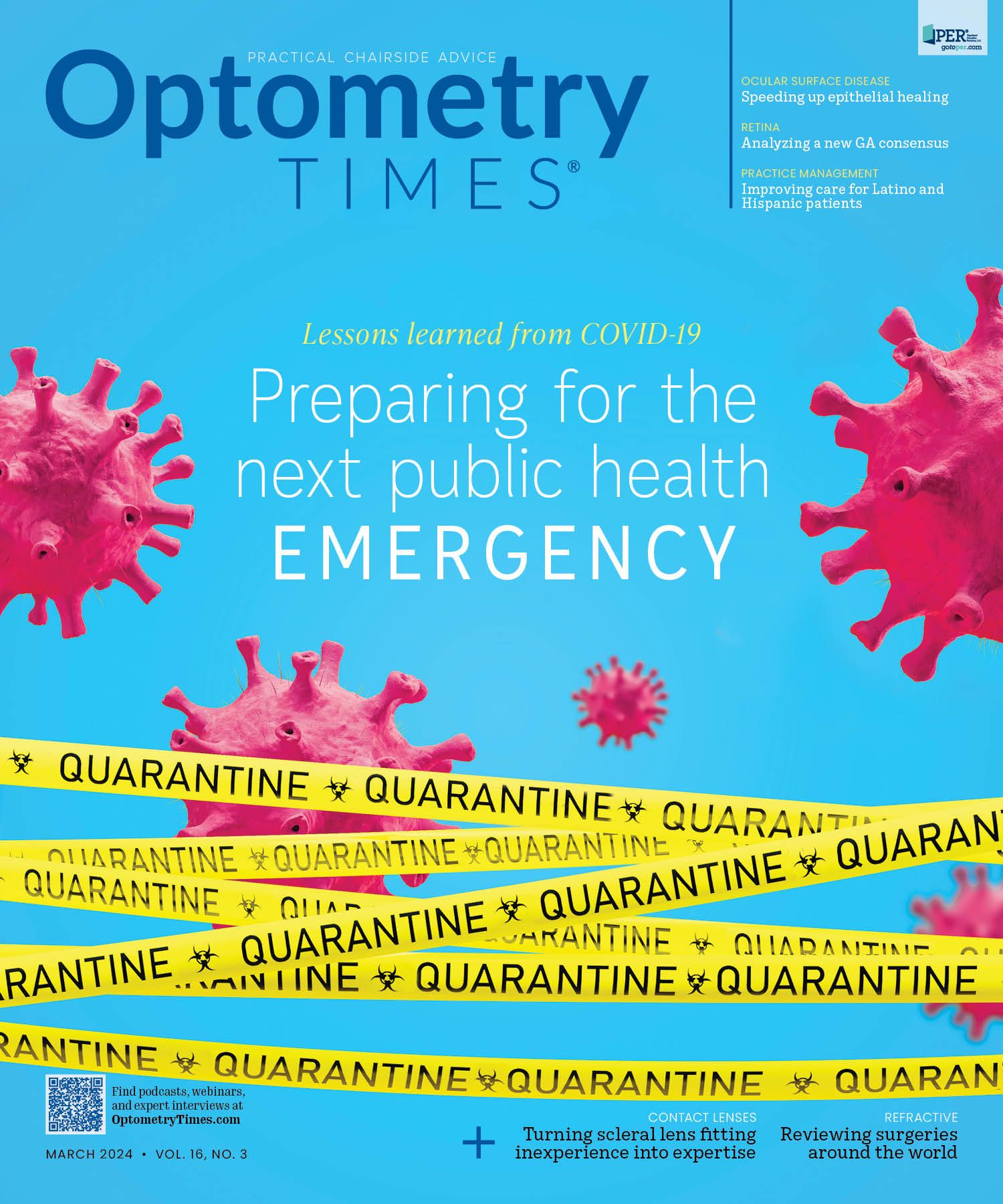Refractive surgery and optometry around the world
A travel in time and across the world shows the development of refractive surgery and how eye care providers can play a part in the future of pre- and postoperative refractive surgery care.
Image Credit: AdobeStock/Bartek

Refractive surgery began as a theory in the late 1800s when published by Norwegian ophthalmologist Hjalmar August Schiøtz , and it became a reality with first attempts in the 1930s in Japan by ophthalmologist Tsutomu Sato.1,2 Advances in technology and alternative techniques were developed over the years by inventors and surgeons all over the world, including Colombia, Mexico, Russia, Germany, Spain, India, and the United States.2 It has taken a world full of intelligent and creative individuals, including optometrists, to develop, implement, and refine the idea and implementation of refractive surgery.
History of refractive surgery
Refractive surgery arguably began with radial keratotomy (RK) in the 1970s changing the shape of the cornea by making corneal incisions.2 In the 1980s, the first photorefractive keratectomy (PRK) was performed and the use of excimer lasers to treat corneal surface was popularized, followed quickly by laser in situ keratomileusis (LASIK).
In the early 1990s, there was considerable concern in optometry surrounding this growing field of refractive surgery and what it meant for clinics. Would it affect their sales of glasses and contact lenses? Would they begin to lose many of their longstanding patients to surgery?
Seeing the importance of making themselves and their practices indispensable, many eye care providers took this opportunity to begin to cotreat these patients. However, a survey by an optometry periodical in 1995 found that of the 500 eye care providers surveyed, there were “62% reported no affiliation with a laser center and [had] no plans to join one.”3
Current role of optometry in the United States
It is very common for eye care providers in optometry to discuss surgical options and provide pre- and postoperative care for not only refractivesurgeries, but for almost all types of ocular surgeries as well. Eye care providers in optometry work in refractive surgical centers as the evaluating physicians, within MD/OD referral centers, and in university settings, in addition to providing the same care within optometry-owned private practices. We have embraced the refractive surgery industry and inserted ourselves within, finding our niche and making optometry a vital component.
The expansion of optometry’s scope within the US over the past 30 to 50 years has helped with the ability to be a part of refractive surgery care. Although not used often for pre- or postsurgical care, oral medications and topical glaucoma medications may be needed, and were finally afforded use by all optometrists in every state in 2021. In both Alaska and Oklahoma, eye care providers in optometry are able to perform PRK.4
Role of optometry in refractive surgery outside the US
Outside of the US, optometry’s role is variable depending on the country and how the profession there is organized. Although available refractive surgeries are similar on a global scale, cotreatment of these patients by eye care providers is not. In part, this is due to differences in education as well as laws.5 According to Blue Book 2020, published by the European Council of Optometry and Optics, optometrists in 21 of the 31 countries that completed the Blue Book questionnaire are permitted to examine both the anterior and posterior portions of the eye.4 Optometrists in 6 countries are prohibited from detecting ocular pathology, and optometrists in 3 countries are prohibited from utilizing ophthalmoscopy.4 More importantly, when discussing cotreatment, optometrists in just 13 of the 31 countries can use diagnostic drugs, and optometrists in only 1 of the 31 can use therapeutic drugs. This makes true cotreatment as we know it in the US difficult.5
A 2023 Delphi panel in the United Kingdom explored the utilization of optometry and guidelines for best practices in refractive management for cataract surgery.6 They reviewed preoperative management and target refraction, postoperative refractive management, and postoperative driving advice.6 The panel included optometrists and ophthalmologists, indicating an understanding of the importance that both play in patient outcomes.
Currently, Canada most closely resembles the US optometric educational and functional scope of practice, as well as utilization of optometry as an essential part of pre- and post–refractive surgery care. All Canadian provinces and territories allow most diagnostic pharmaceuticals, topical treatments, foreign body removal, dilation and irrigation, and punctal plugs.7 A majority of the province and territories allow limited oral prescriptions and laboratory testing, and none allow injections or lasers.7
Optometry scope expansion outside the US
Similarly to the United States, other countries have been seeing steady progress in scope expansion, but because of the significant differences in education requirements, it is not likely that all countries will be on the same level anytime soon.
In 2022, Ireland released its proposal to prioritize scope changes to help achieve earlier diagnosis and treatment, including authorizing eye care providers to directly refer patients for emergency care, increase medication prescription privileges, and allow for treatment of additional conditions such as glaucoma and dry eye.8
In 2023, Canada released its strategic 2023-2026 plan, which includes positioning optometry as the hub for eye health and vision care, improving integration of technology into practices, and providing advanced education, as well as seeking scope expansion.9
Future of refractive surgery and optometry
Our definition of refractive surgery continues to change.Over the years it has included conductive keratoplasty, RK, LASIK, PRK, orthokeratology, Raindrop inlay, and Kamra corneal inlay. More recently, small incision lenticule extraction, implantable collamer lenses, and refractive lens exchange have found a home in this category.Who knows what may be the next iteration and generation of treatment?
As surgery evolves, so does the need for eye care providers to understand these changes, discuss them with patients, and help with both pre- and postoperative care.It is unlikely that most states will find eye care providers behind the helm of the laser directing the treatment.
However, utilization of corneal crosslinking (CXL) for refractive surgery is being implemented outside the US and is being investigated within. Currently, many states allow eye care providers to perform CXL, as well as nonsurgical and nonpenetrating procedures. What does this mean for optometry and refractive surgery with the coming advances in technology? And what will happen when treatment leads to newer, less invasive options? Time will tell.
References:
Schiøtz, H. Ein fall von hochgradigem hornhautastigmatismus nach starextraktion: besserung auf operativem wege. Arch Augenheilkd. 1885;15:178-181.
Moshirfar M, Bennett P, Ronquillo Y. Laser in situ keratomileusis (LASIK). In: StatPearls. StatPearls Publishing; 2023. Accessed February 5, 2024. https://www.ncbi.nlm.nih.gov/books/NBK555970/
Becker A. Refractive surgery in retrospect. Review of Optometry. July 21, 2016. Accessed February 5, 2024. https://www.reviewofoptometry.com/article/refractive-surgery-in-retrospect
Geller M, Goldberg L, Nguyen Q. Optometry scope of practice in the United States. Eyes on Eyecare. Published June 17, 2022. Accessed February 14, 2024. https://eyesoneyecare.com/resources/2023-optometrist-report/?utm_medium=eoe:infinite-scroll
European Council of Optometry and Optics. Blue Book 2020: trends in optics and optometry-comparative European data. Accessed February 5, 2024. https://www.ecoo.info/wp-content/uploads/2020/10/ECOO-BlueBook-2020_website.pdf
Charlesworth E, Ursell P, Ho KC, Keay L, Elliott DB. Developing refractive management recommendations for patients undergoing cataract surgery: a Delphi study. Ophthalmic Physiol Opt. 2023;43(1):150-159. doi:10.1111/opo.13069
Optometry scope across Canada. Canadian Association of Optometrists. Updated August 31, 2023. Accessed January 20, 2024. https://opto.ca/document/optometry-scope-across-canada
McKenna, Pixie. “The State of the Ireland’s Eye Health 2022”. Accessed January 20, 2024. https://www.fightingblindness.ie/news/the-state-of-the-irelands-eye-health-report-2022-glaucoma-a-ticking-time-bomb/
Canadian Association of Optometrists Strategic Plan 2023-2026. Canada Association of Optometrists. Report. Accessed February 5, 2024. https://opto.ca/sites/default/files/resources/documents/CAO-Strategic%20Plan%202023-2026-Digital_EN_02-01-2023.pdf

Newsletter
Want more insights like this? Subscribe to Optometry Times and get clinical pearls and practice tips delivered straight to your inbox.